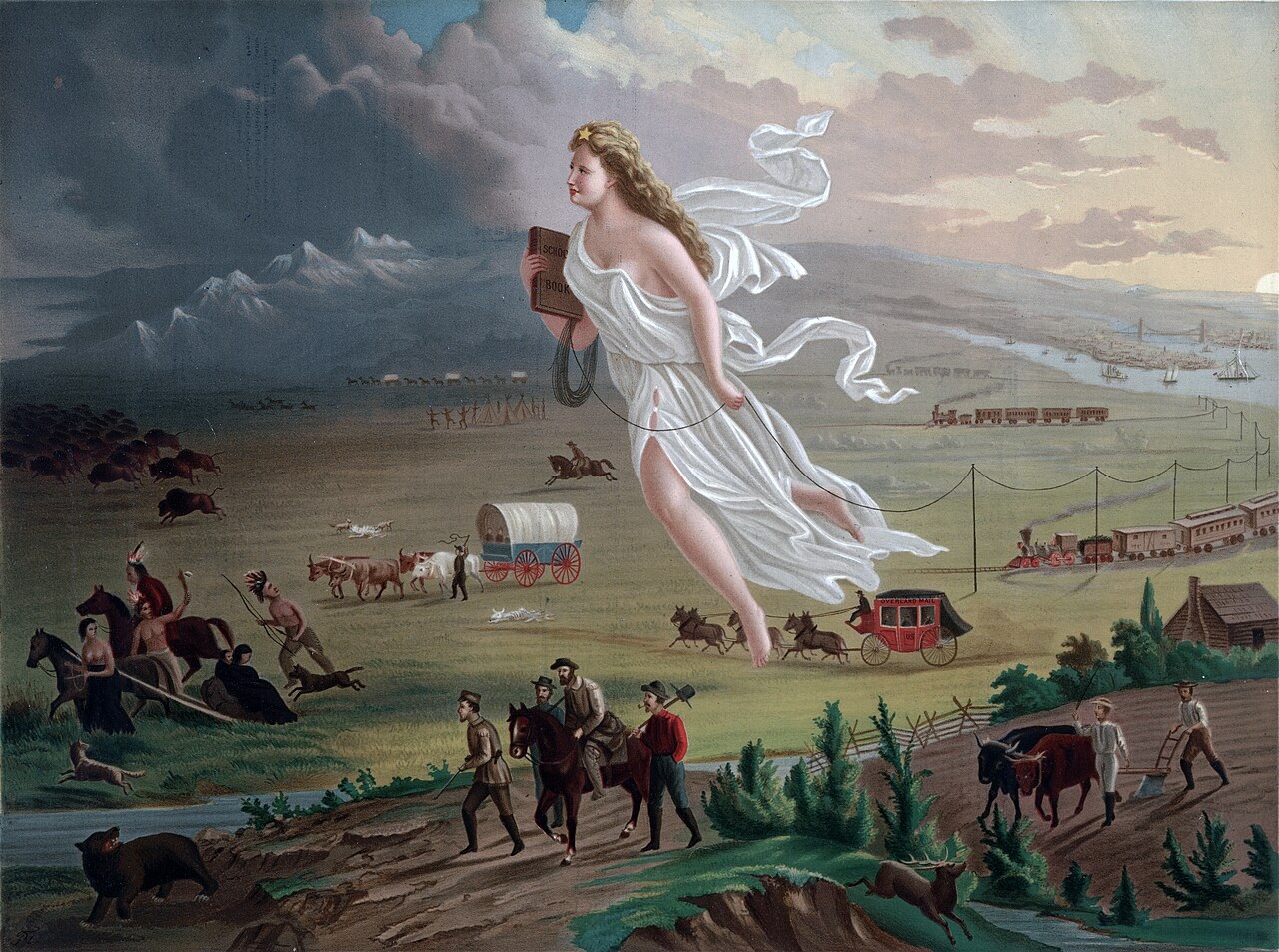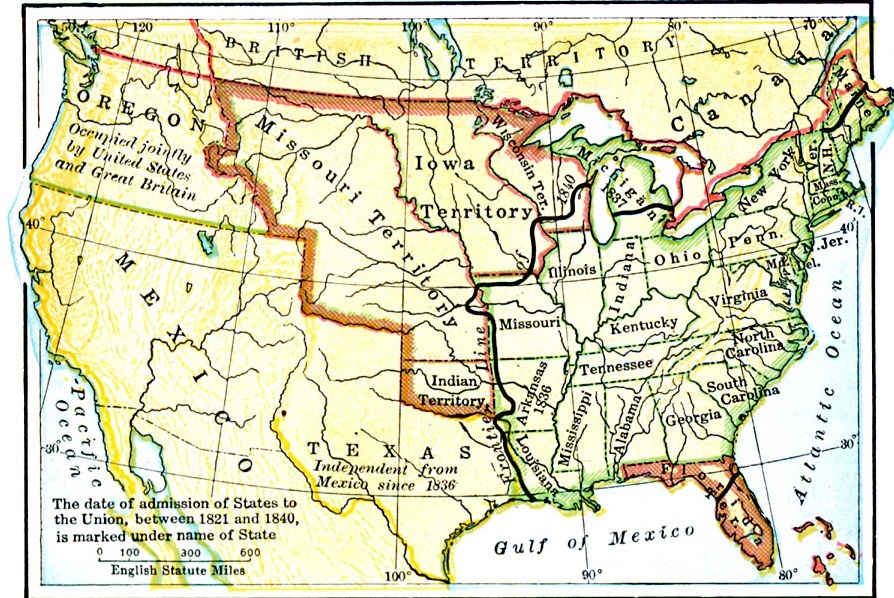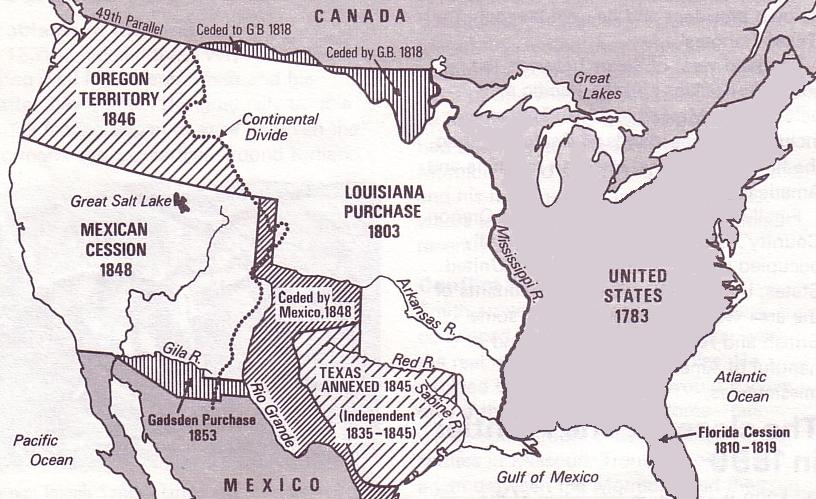|
|
|
The Belief in Manifest DestinyEver since the Puritans landed in Plymouth in 1620, Americans had believed that they were the guardians of something special, a notion enhanced by the American Revolution, which established America, in Americans’ minds, as “the land of the free and the home of the brave”. The concept of ‘manifest destiny’ was outlined in the writings of journalist John O’Sullivan who – during America’s quarrel with Britain over Oregon in 1845 – argued that, because America was a republican democracy and Britain was not, it was America’s manifest destiny (= obvious mission) to occupy the land: “And that claim is by the right of our manifest destiny to overspread and to possess the whole of the continent which Providence has given us for the development of the great experiment of liberty and federated self-government entrusted to us.” And thus America had not just the RIGHT but the DUTY to populate and cultivate the Plains, and to drive out the Indigenous Nations who stood in their way.
|
Going DeeperThe following links will help you widen your knowledge: A detailed account from the Smithsonian American Art Museum - read the section on the Historical Background
YouTube
|
Source A
This artwork, American Progress (1872) by artist John Gast, shows 'Columbia' leading civilisation westwards.
|
Consider:1. Study Source A. Using the skills of denotation – e.g. how she is portrayed/ what she is carrying – and of connotation you have learned in English, interpret the meaning and intended impact of the figure of Columbia (as a representation of America). 2. What is happening on the left and at the bottom of the artwork? 3. What can you seein the rest of the artwork? How does Gast define 'civilisation' and the process of 'civilising'?
|
The FrontierThe idea of Manifest Destiny went hand-in-hand with the idea of ‘the ‘Frontier’. The US Census defined the frontier as land with fewer than 2 people per square mile but, for Americans, ‘frontiersmen’ were the people – starting with the first trappers and Mountain Men, and then through the gold miners, cowboys and homesteaders – who left the safety of the cities and civilisation in the East, and struck out to make a new life in the untamed West. For historian Frederick Jackson Turner, in a lecture in 1893, the frontier was "the meeting point between civilization and savagery". Turner went even further, however, arguing that the frontier spirit had created the true American spirit: "coarseness and strength combined with acuteness and inquisitiveness; that practical, inventive turn of mind, quick to find expedients; that masterful grasp of material things, lacking in the artistic but powerful to effect great ends; that restless, nervous energy; that dominant individualism, working for good and for evil, and withal that buoyancy and exuberance which comes with freedom." For a long time, Turner’s ideas dominated the historiography of the American West. Nowadays, however, historians see the time, not as the triumph of civilisation over wilderness, but as “a crossroads of cultures, where various groups struggled for property, profit, and cultural dominance” (Library of Congress, 2020). And you, of course, have the right to interpret it in another way still.
|
This map from a 1919 textbook shows the US in 1840, including a black line showing the Frontier at that time; click on the image to bring up a larger version.
|
The Growth of the United StatesThus, the mid-19th century saw a rapid westwards expansion of the United States, followed by a westwards expansion of settlement/colonisation and the setting up of territories and states. The only problem with this was that 'the West' was NOT a wilderness; somebody already lived there.
Source B
This map shows the growth of the United States, 1783-1853.
|
This animated map shows the colonisation of the North Amercican continent by non-native powers, 1750-present-day. These Census Maps (pdf) give a vivid picture of the westwards movement of population. |
|
| |


